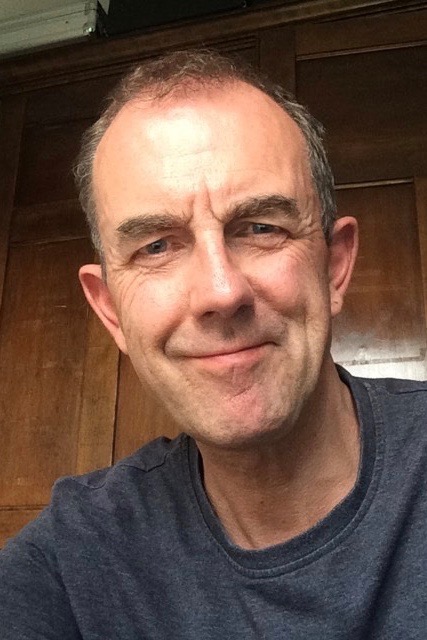Real-life problems and big data solutions

Ian Smith
Our Researcher of the Month for July is Ian Smith, of Cambridge’s Royal Papworth Hospital.
Reducing traffic to and from medical facilities – and examining driving behaviour among those with sleep problems – are the subject of ongoing high-level complex research across Europe.
Ian Smith heads up the sleep service at Cambridge’s Royal Papworth Hospital in the UK, which is contributing health care data to a project called Track and Know, aimed at bringing big data solutions to real-life geospatial problems.
Royal Papworth accepts referrals from across the East of England; an area of some 19,000 square kilometres, with around 20,000 patients being seen each year. The population of the region is thinly spread, with an average density of 310 people per square kilometre – compared, for example, to more than 1,500 in London.
Smith told Research Information: ‘We often need to arrange sleep studies for patients at home that would require several trips to and from the hospital, which would add up to journeys of as much as 400km for some people. The solution has been to develop a network of outreach facilities over the last 10 years to improve accessibility, but these have been situated as best guesses to serve our referred population. At the peak we had 23 facilities and the average journey was 35 km.
Through the project the team – a mix of 14 university and commercial partners from 10 countries ranged across the EU – has analysed 46,211 historical patient journeys and modelled the most efficient network.
Smith continued: ‘The model shows that we can provide the service most efficiently with just 10 clinics and reduce the average journey to 17km, saving up to 30 tonnes of CO2 emissions a year.
‘We have looked further into our referral base by the socio-economic status of the areas from which patients are referred; we would anticipate more sleep illness in areas with social deprivation related to poor employment opportunities, increasing rates of obesity, and increased numbers of older residents.
‘However we have had fewer referrals from these areas, when patients do attend they are more unwell and a higher proportion of patients fail to attend their appointments. We also now know that more people miss their appointments when it is sunny than when it is raining! We are re-running these high-level, complex models to see if we can make journeys particularly easy for people referred from areas that are socio-economically challenged.’
Driving knowledge
The team is also working on a sub-project that examines driving behaviour among those with sleep disorders.
Smith said: ‘We know that people with sleep disorders are more likely to crash their cars than people with good sleep, maybe four times more likely, and it also seems likely that shift workers are also at risk. However there are currently no good measures of who is at risk and who is safe.’
Accordingly, the team is developing a mobile phone app to measure driving behaviour, and is currently monitoring the driving of staff at the hospital who work a mix of day and night shifts. It will soon start monitoring patients with sleep illnesses before and after treatment as they drive around the East of England region.
Smith said: ‘The plan is to use the app to alert people when their driving performance is drifting. In future, it should be able to help adjudicate on whether or not people can return to driving when they have had a sleep illness – the aim is to contribute to an improvement in road safety, and also getting people back to work as soon as it is appropriate. Other use cases for the whole Track and Know platform include looking at insurance models based on driving behaviour, and fleet management – predicting journeys and efficient distribution of resources.
'The data analysis teams have built the Track and Know platform to accept a broad range of data types and allow for rapid processing of ‘big data’ integrating driver behaviour with local road conditions, weather patterns, distribution of retail outlets, petrol stations, electrical charging points, weight of traffic, known accident black spots, and so on.'
The study is funded from an EU 2020 grant of 4.8 million euros, and all publications relating to the research are required to be open – they can be found at https://trackandknowproject.eu/publications/. Furthermore, many of the models and algorithms are based on the EU Track and Know project, where some of the data and models are public: https://trackandknowproject.eu/file-repository/
Smith concluded: ‘National Health Service journeys account for around five per cent of traffic on our roads, so obviously if we can reduce this we can have a major impact on road congestion and CO2 emissions. In the era of Covid there is an increasing premium attached to reducing travel and visits to health care facilities unless absolutely necessary. Sleepiness is now a bigger problem for road safety than alcohol, so identifying sleepy drivers is a key priority and a simple phone app could give drivers their own safety profile.
‘Replanning services throughout the NHS may help clear backlogs caused by the lockdown, and better match supply and demand in the coming years. On the back of the current work, a sub-group from Track and Know has been awarded a grant from Innovate UK to address exactly this challenge. Watch this space!’
Ian Smith is a consultant physician, and deputy medical director and director of research and development at Royal Papworth Hospital. Interview by Tim Gillett
Do you know anyone who deserves to be our Researcher of the Month? Let us know!






